PsychNewsDaily Publishers
100 Summit Drive
Burlington, MA, 01803
Telephone: (320) 349-2484
PsychNewsDaily Publishers
100 Summit Drive
Burlington, MA, 01803
Telephone: (320) 349-2484
Visual SEO audit tools help marketers evaluate website performance, identify optimization areas, and enhance online visibility through user-friendly insights on technical issues and user experience.

Visual SEO audit tools play a crucial role in helping marketers evaluate their websites. These tools offer insights into various aspects of site performance, making it easier to identify areas for improvement.
Choosing the right visual SEO audit tools can significantly enhance a marketer’s ability to optimize their online presence and drive more traffic.

In a landscape where online visibility is key, understanding SEO strengths and weaknesses is essential. Marketers need reliable tools that not only provide data but also present it in a user-friendly way. With the right tools, they can make informed decisions to improve their website’s performance and user experience.

Screaming Frog SEO Spider is a popular tool for marketers. It helps users improve their website’s SEO by finding common issues.
With its user-friendly interface, it can crawl up to 500 URLs for free. This makes it a great option for smaller sites or those just starting with SEO audits.
The tool can identify broken links, duplicate content, and other errors that may hurt search rankings. It also provides important data, like page titles and meta descriptions.
Screaming Frog is trusted by many SEO professionals. They appreciate its reliability and the detailed insights it offers.
Overall, this tool is a fantastic choice for anyone looking to boost their website’s SEO performance.
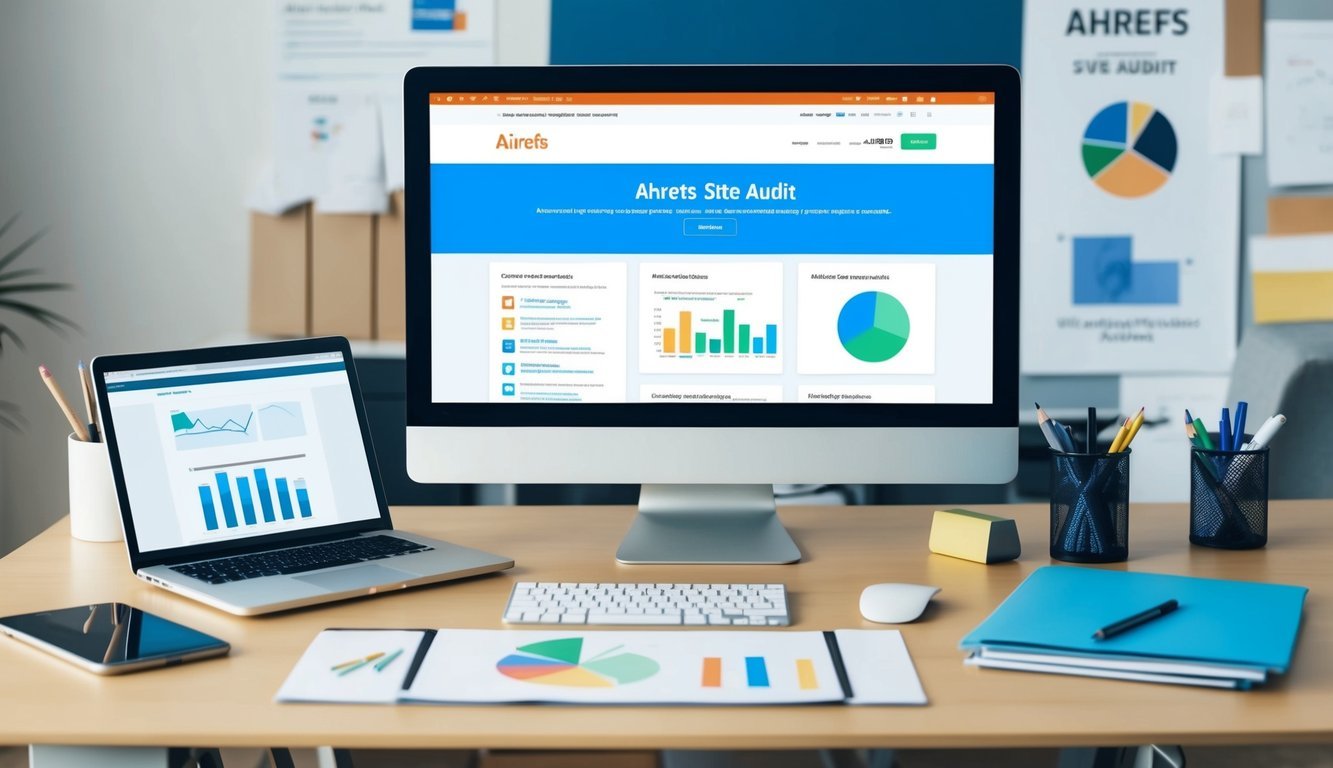
Ahrefs Site Audit is a popular tool among marketers. It helps find SEO issues on a website easily. Users can scan their sites for a variety of problems.
This tool checks for technical issues like broken links and slow loading times. It also looks at on-page factors, such as missing title tags and meta descriptions.
Ahrefs provides a clear overview of a site’s health. Users can see which areas need attention and prioritize fixes. The insights offered make it easier to improve search rankings.
With a user-friendly interface, even beginners can navigate Ahrefs smoothly. The tool provides helpful suggestions for each issue it identifies.
Using Ahrefs Site Audit can boost a website’s SEO performance. It is a solid choice for anyone looking to enhance their online presence.

SEMrush Site Audit is a popular tool for marketers wanting to improve their website’s SEO health. It helps users identify issues that might affect their site’s performance.
This tool scans the website and provides a detailed report on various aspects like broken links, slow loading times, and duplicate content. Users can easily understand where improvements are needed.
SEMrush also allows tracking changes over time. Marketers can see how their site evolves after fixing issues. This is useful for ongoing SEO strategies.
With a user-friendly interface, SEMrush makes it simple to navigate through reports. Even beginners can find it easy to use.
Overall, SEMrush Site Audit is a reliable choice for anyone serious about enhancing their site’s SEO. It offers valuable insights that can lead to better search engine rankings.
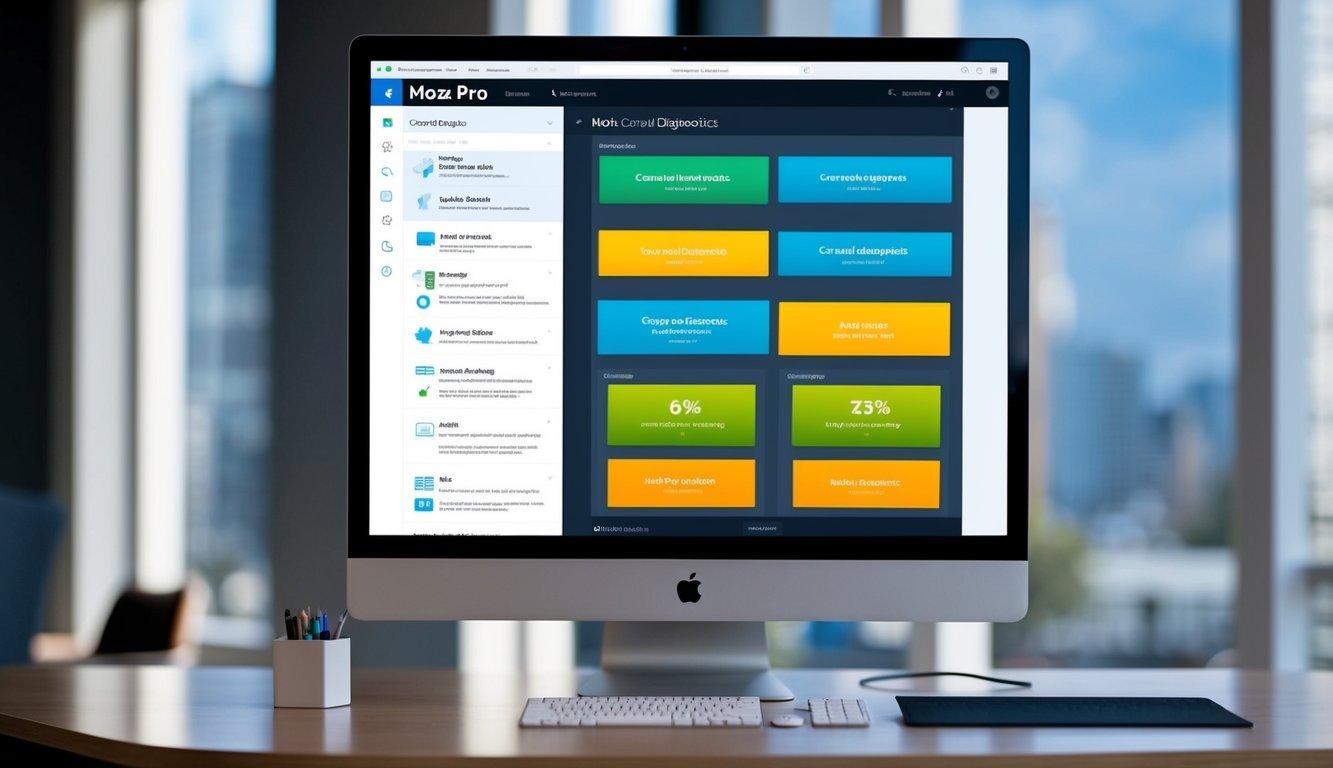
Moz Pro Crawl Diagnostics is a helpful tool for marketers who want to improve their website’s SEO. It scans sites quickly to find issues that might hurt search rankings.
This tool checks for problems like broken links and missing titles. These issues can prevent search engines from properly indexing a site. By identifying them, Moz Pro helps users fix these problems easily.
The tool presents findings in clear charts, making it simple to understand where issues lie. Marketers can track both new and recurring problems over time.
Using Moz Pro Crawl Diagnostics can lead to better website performance. It gives users the insights they need to enhance their SEO strategies.

Sitebulb is a powerful tool for marketers looking to improve their website’s SEO. It provides clear visuals and in-depth insights that make it easy to spot technical issues.
Users can crawl up to 500,000 URLs in a single audit. This feature allows for comprehensive analysis of large sites.
One standout aspect of Sitebulb is its interactive reports. These reports include charts and heatmaps that help users understand their data better.
Sitebulb is designed to be user-friendly, making it accessible for both beginners and experienced marketers. With its prioritization of SEO issues, it helps users focus on what matters most for website performance.
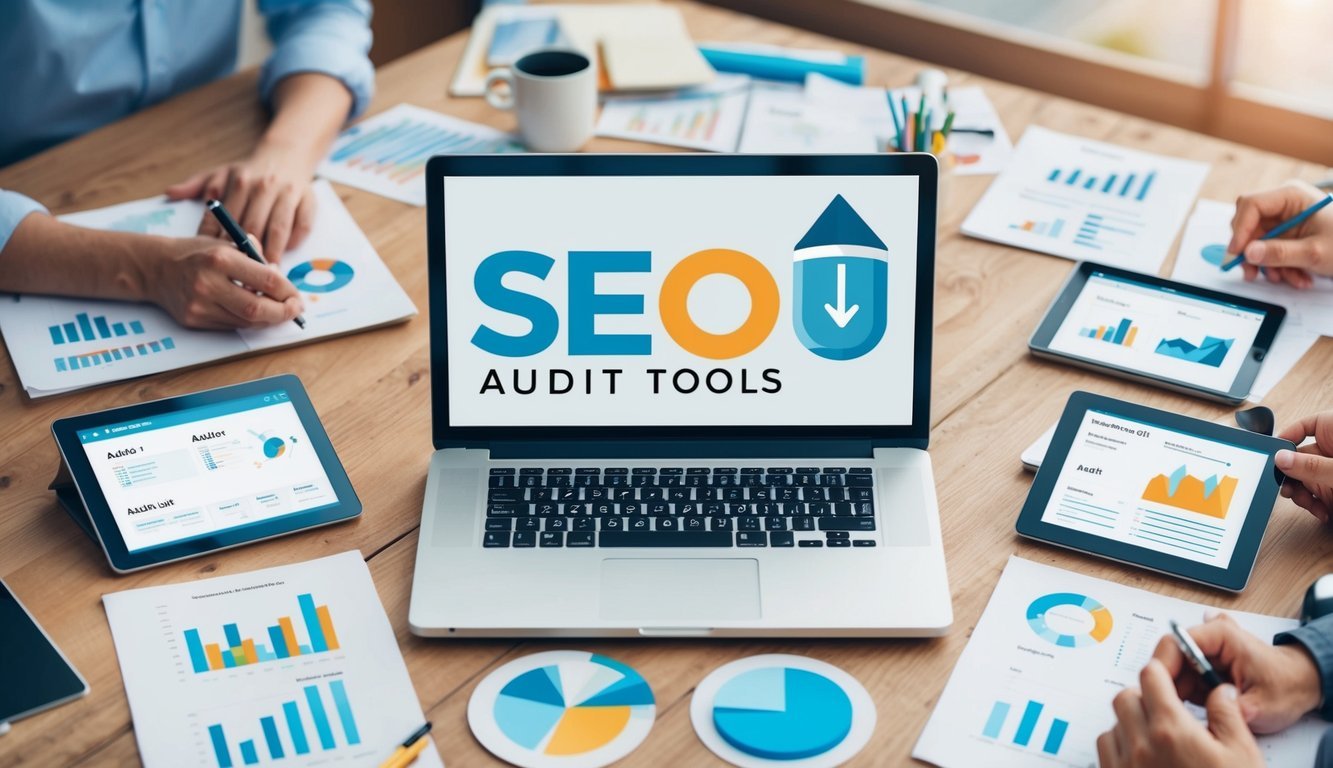
DeepCrawl is a powerful tool for website audits. It is designed to help marketers find technical SEO issues on their sites.
This tool can crawl millions of web pages. This makes it useful for large websites or marketing campaigns that need thorough analysis.
DeepCrawl provides detailed reports. Marketers can use these reports to understand where improvements are needed.
One of its strengths is identifying problems with site architecture. By fixing these issues, websites can improve their performance in search rankings.
Another benefit is its ability to track changes over time. This helps users see the impact of their SEO efforts.
Overall, DeepCrawl is a solid choice for those serious about SEO. It offers valuable insights that can lead to better website health and visibility.
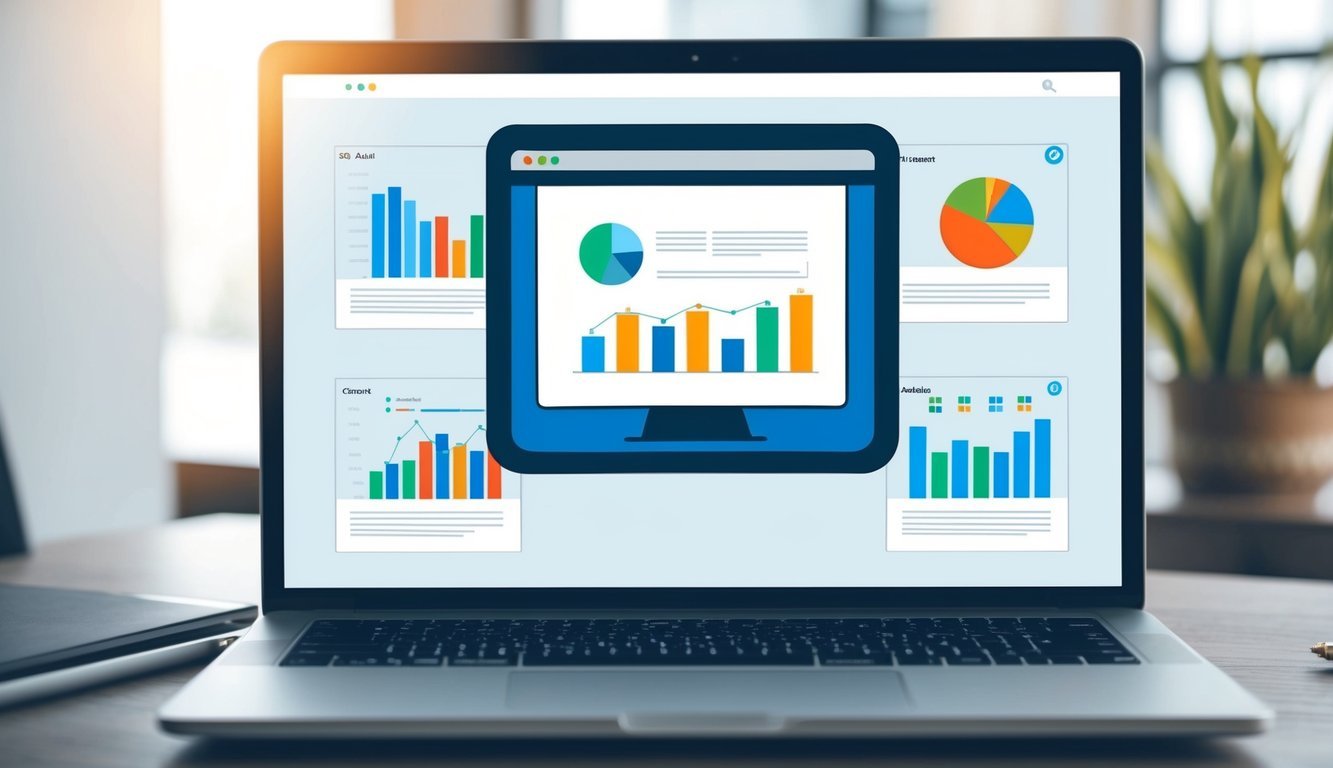
Google Search Console is a free tool that helps website owners track their site’s performance in Google search results. It provides valuable insights into how a site appears in searches.
Users can see keyword performance, total clicks, and impressions. This data helps marketers understand which keywords are driving traffic.
The tool also alerts users to issues that might affect their site’s visibility. This includes problems like broken links or crawl errors.
With Google Search Console, marketers can submit sitemaps and ensure their content is indexed. The dashboard is user-friendly and suitable for all skill levels.
By using this tool, they can improve their site’s SEO and overall search presence. It’s essential for anyone wanting to enhance their online marketing efforts.
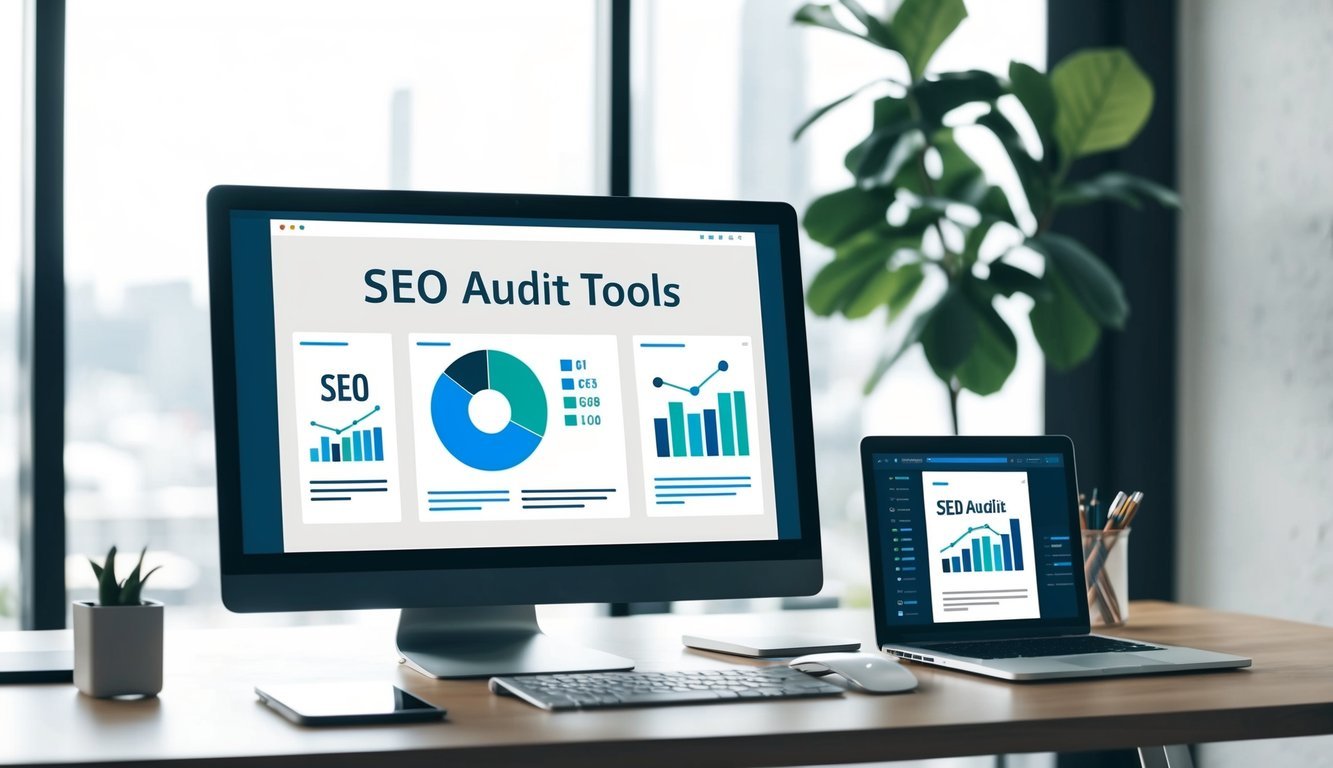
OnCrawl is a powerful tool for technical SEO. It helps marketers analyze their websites in depth. This tool uses smart algorithms to scan site data and offer insights.
Marketers can track various aspects of their site, such as crawl performance and keyword ranking. It makes it easier to spot issues that might affect visibility on search engines.
OnCrawl also provides reports that help in decision-making. By understanding the data, users can improve their site’s performance. This can lead to a better return on investment.
With features for deep analysis, OnCrawl stands out for its efficiency. It’s designed to meet the needs of both small businesses and larger agencies. This adaptability makes it a great choice for many marketers.
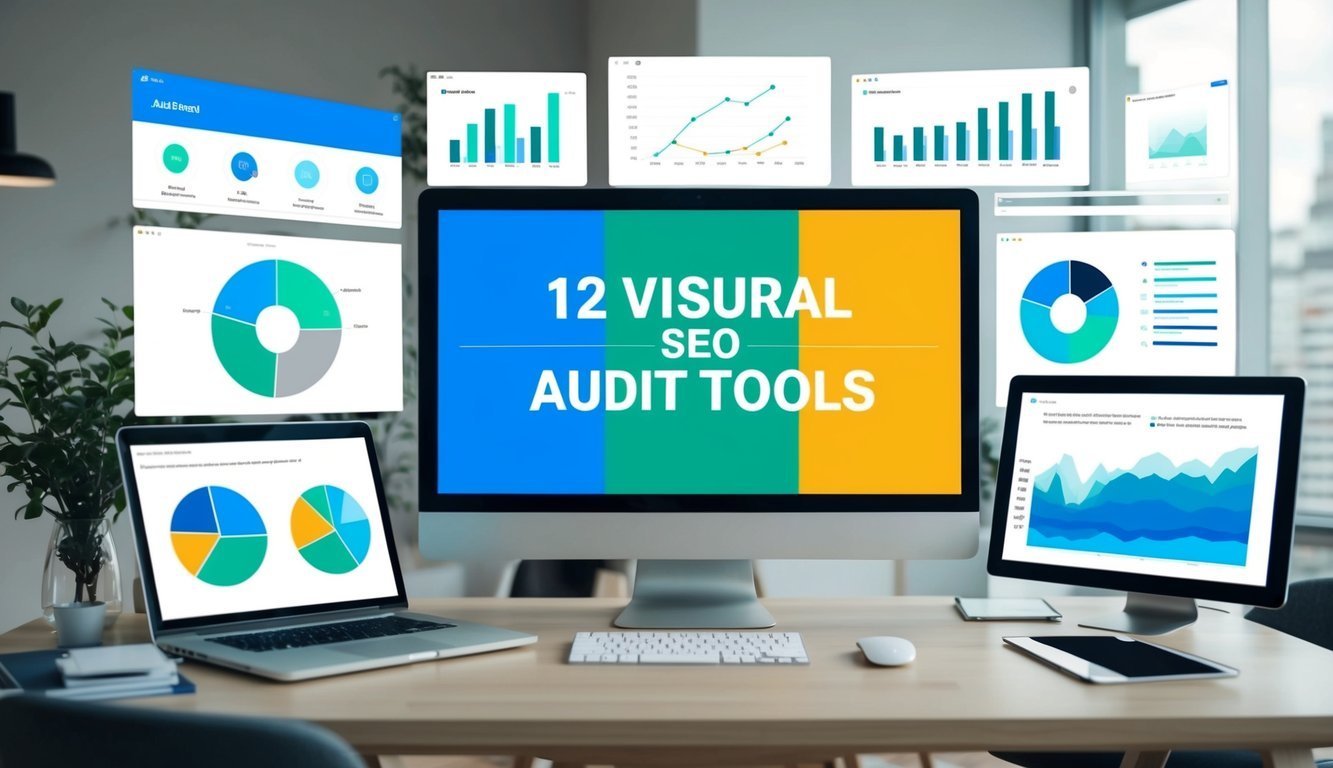
Botify is a powerful SEO platform designed for larger businesses. It helps marketers unlock a website’s full potential. With its advanced analytics, it provides insights that can enhance organic search performance.
This tool offers features like keyword tracking and site auditing. It allows users to see how their website performs in search engines. Marketers can identify areas for improvement and optimize their content accordingly.
Botify also focuses on the entire search process. This includes everything from crawling to conversions. By understanding this journey, businesses can make better decisions to attract more visitors.
The user-friendly interface makes it easy to navigate through the data. With Botify, marketers can track their progress and see results over time.
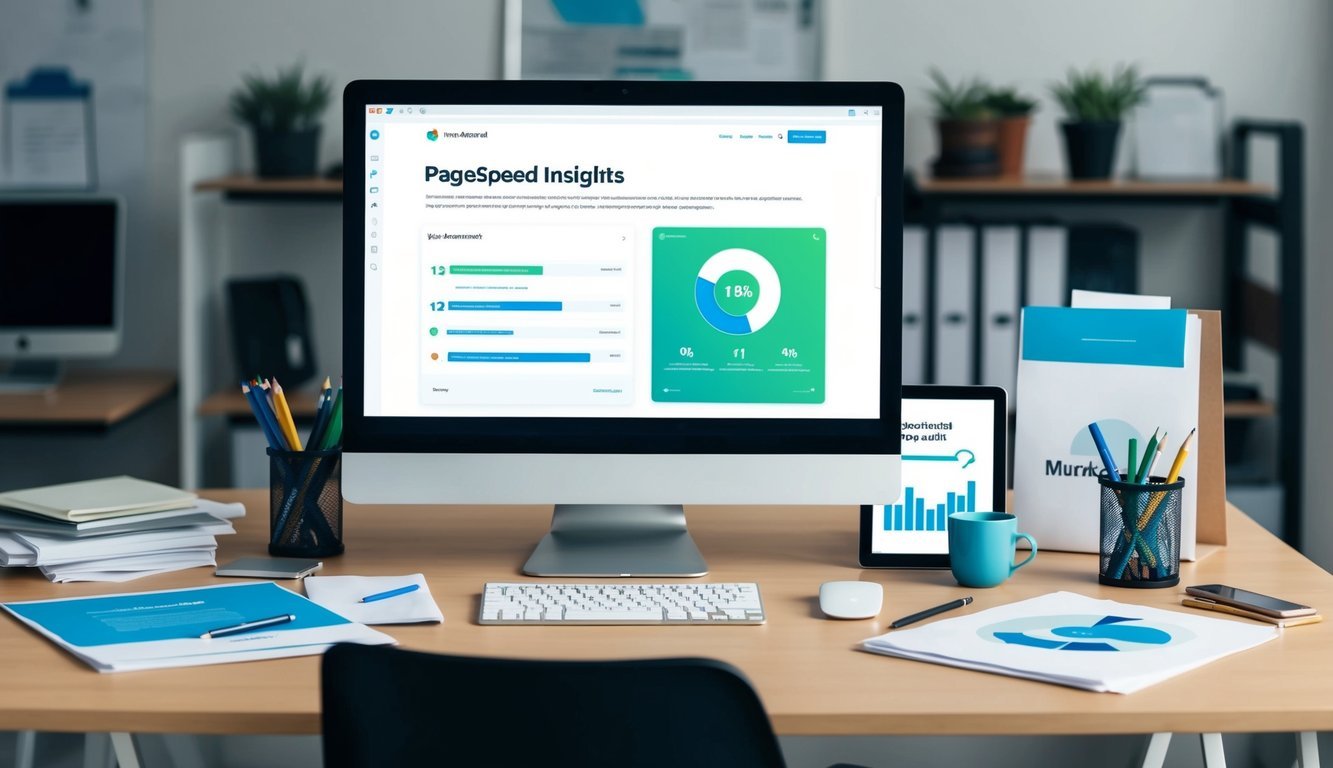
PageSpeed Insights is a tool from Google that helps users check the loading speed of their websites. It provides scores for both mobile and desktop versions.
The tool analyzes a webpage and gives suggestions for improving performance. This includes tips on optimizing images, fixing server response times, and reducing render-blocking resources.
Users can see how their site performs and what actions to take. It’s perfect for marketers looking to enhance user experience.
PageSpeed Insights is easy to use. Just enter the website URL, and within seconds, users receive a detailed report.
This tool is valuable because page speed is important for both SEO and user satisfaction. Faster websites often rank better on search engines.
By using PageSpeed Insights, marketers can make informed decisions to improve their site’s speed and performance.
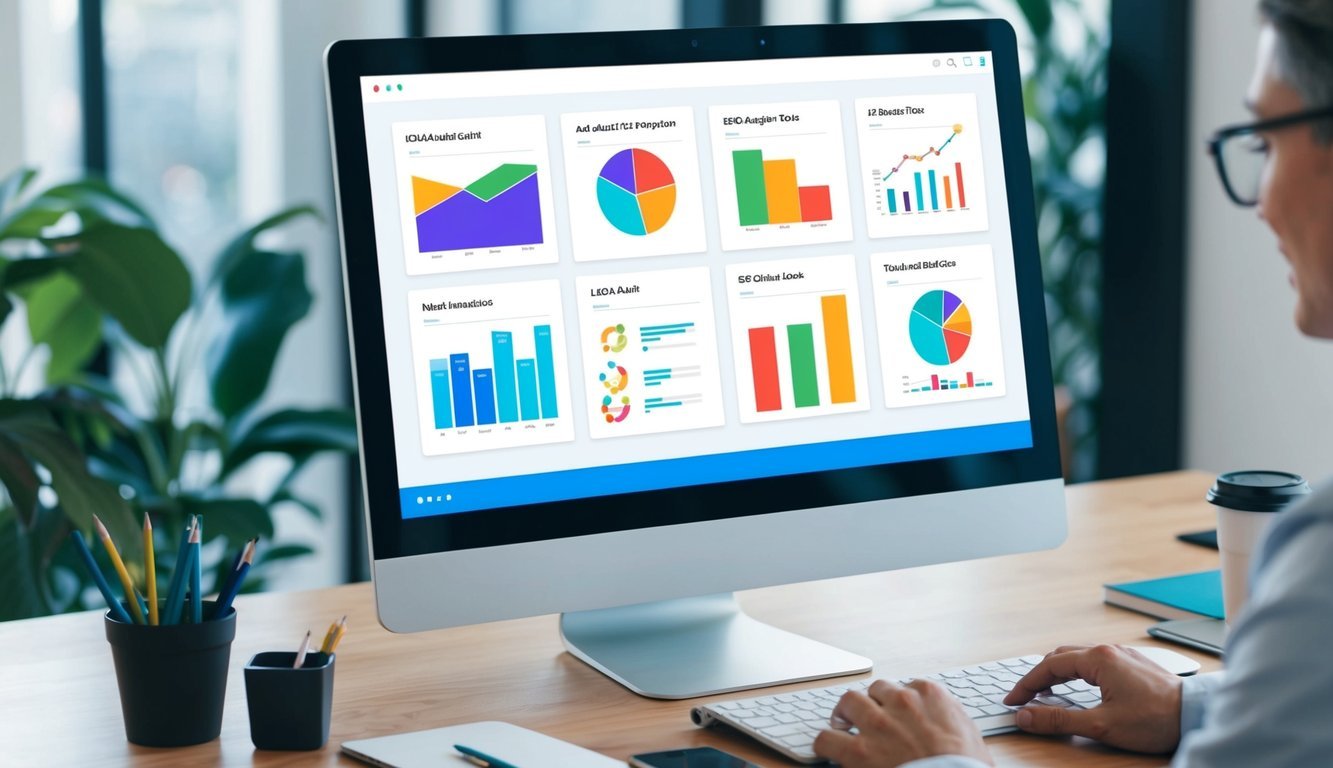
Lumar is a powerful tool for website optimization. Known for its detailed audits, it helps marketers understand their site’s performance.
It offers features like technical SEO checks and accessibility assessments. These tools make it easier for teams to fix issues that might hurt their website’s visibility.
Lumar provides insights into site speed, which is important for user experience. Faster sites tend to keep visitors longer and rank better on search engines.
This platform is designed for enterprises, making it scalable to any size. Marketers can rely on its accurate data to make informed decisions.
With Lumar, teams can track changes over time. This helps them see the impact of their SEO efforts. It is a solid choice for those seeking to enhance their website’s performance.
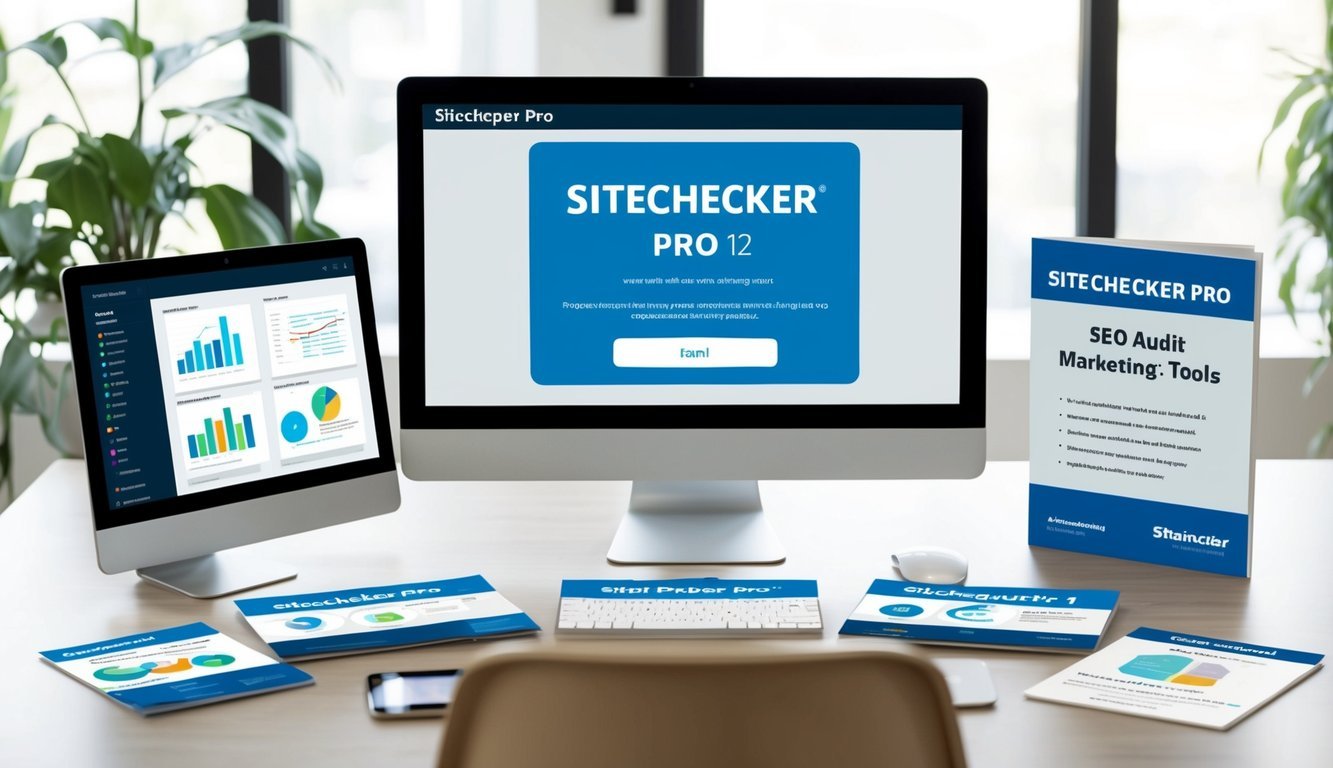
Sitechecker Pro is a popular SEO tool that helps marketers analyze their websites. It provides features to track website performance and detect issues.
One of its key features is the online rank checker. This tool lets users see how their keywords are performing in search engines. It is easy to use and offers clear results.
Sitechecker Pro also combines data from various sources. This includes Google Search Console and GA4. Such integration allows for a comprehensive view of website metrics.
Marketers often appreciate the actionable insights Sitechecker Pro provides. These insights can help improve SEO and increase website visibility.
With its user-friendly interface, Sitechecker Pro makes SEO audits simpler. It is suitable for both beginners and experienced marketers looking for reliable tools.
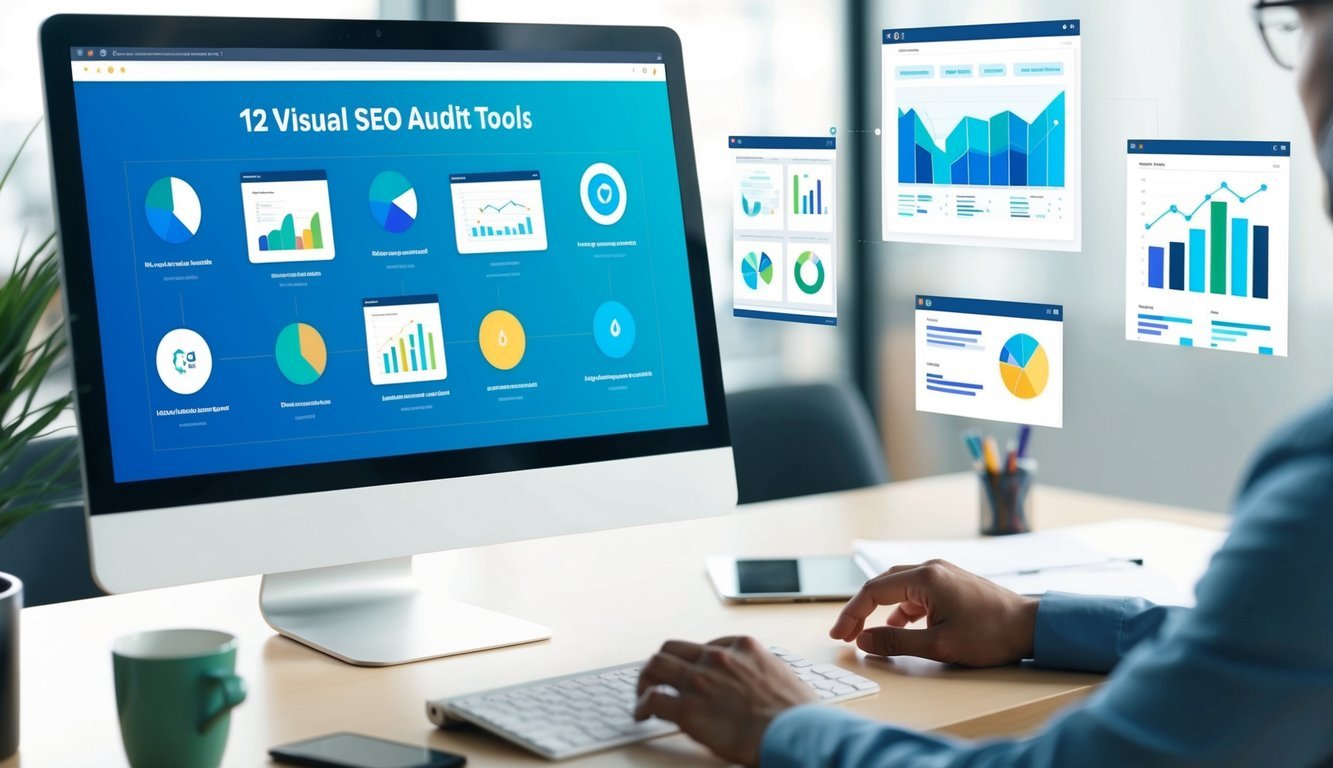
Visual SEO audits play a crucial role in analyzing and enhancing a website’s performance. They focus on how users interact with the site and how easily search engines can access its content. This section explores two essential aspects: improving user experience and enhancing website accessibility.
A strong user experience keeps visitors engaged and reduces bounce rates. Visual SEO audits help identify design issues, slow-loading images, and confusing navigational elements. By addressing these problems, websites can create a smoother, more enjoyable journey for users.
Key factors to consider include:
Improving these elements can lead to longer visits and increased conversions.
Accessibility ensures that all users, including those with disabilities, can access a website’s content. Visual SEO audits can spotlight areas where accessibility falls short. This is important not only for ethical reasons but also for reaching a wider audience.
Key accessibility features to evaluate are:
Enhancing these aspects fosters an inclusive environment and boosts overall site reach.
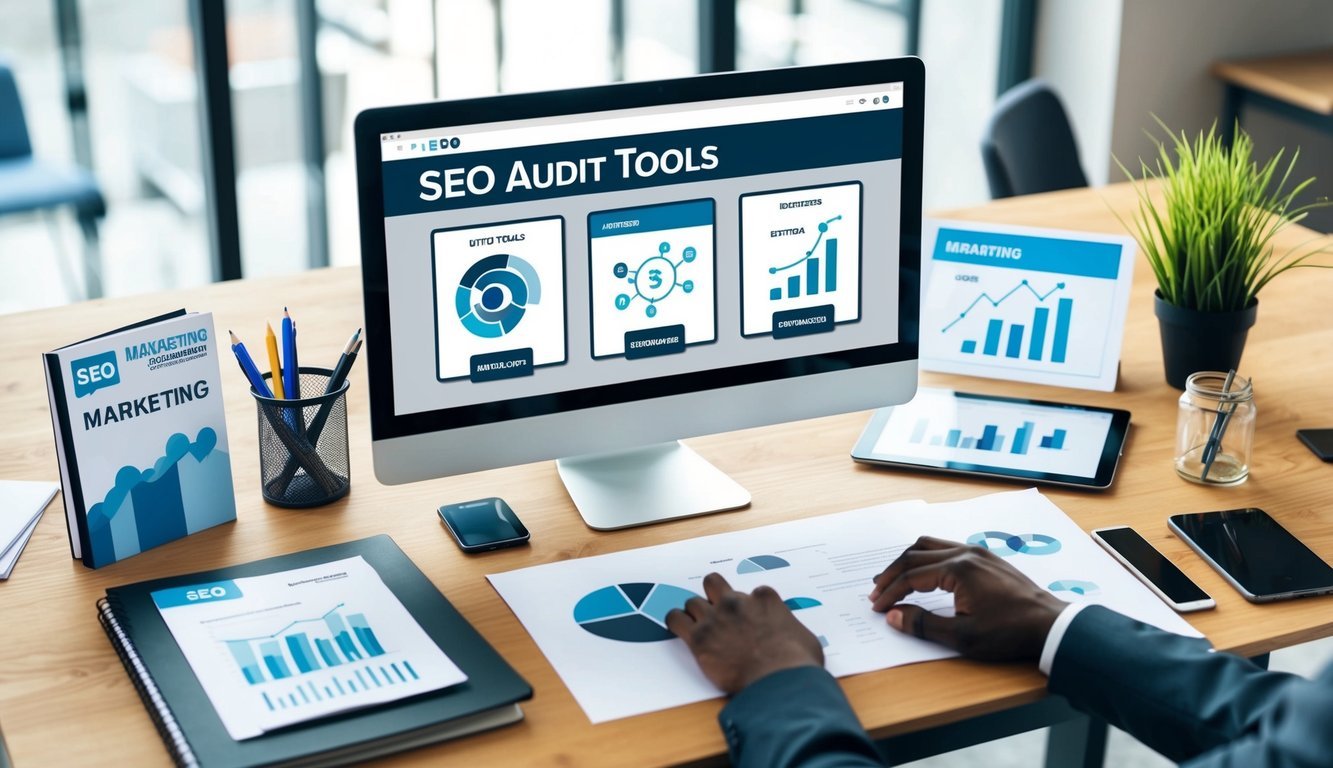
Selecting the right SEO audit tool involves considering several important factors. Marketers should focus on tool features and capabilities, as well as ease of use and integration. Each aspect can significantly impact how effectively the tool can serve their needs.
When choosing an SEO audit tool, you need to examine its features closely. A good tool should analyze site performance, identify technical issues, and provide insights on keywords. Look for tools that offer:
Additionally, comprehensive reporting capabilities can help marketers understand data better. A dashboard that visualizes this information makes it easier to spot trends and track improvements over time.
Another key factor is how user-friendly the tool is. A complicated interface can waste time and lead to frustration. User-friendly tools should have:
Integration with other marketing tools is also important. Tools that connect easily with analytics platforms or content management systems streamline workflow and enhance productivity. This connectivity allows teams to work more efficiently while maximizing insights gained from SEO audits.
As the digital landscape evolves, SEO auditing continues to change. Marketers must pay attention to new technologies and strategies that can enhance their SEO efforts. Two key trends are the rise of AI and automation, and the growing importance of mobile optimization.
AI is transforming how marketers conduct SEO audits. Tools that use machine learning can analyze vast amounts of data quickly. This helps in identifying issues and opportunities more efficiently. Automated audits can provide real-time insights, allowing marketers to adjust strategies instantly.
Some popular AI-driven tools include:
These tools can simplify complex data analysis. Marketers can focus on creative strategies rather than manual data gathering. Automation leads to quicker decisions, which can improve website performance significantly.
Mobile optimization has become essential for effective SEO auditing. With many users accessing the web via smartphones, websites must perform well on these devices. Search engines prioritize mobile-friendly sites in their rankings.
Key factors for mobile optimization include:
Marketers need to regularly check their site’s mobile performance using tools like Google’s Mobile-Friendly Test. This helps identify issues that could affect rankings. Keeping sites optimized for mobile can increase traffic and engagement, making it a vital focus for the future.
This section addresses common questions about SEO audit tools, focusing on recommendations for beginners, visual reporting features, and key functionalities to look for. It also explores the differences between free and paid tools and suggestions for small businesses.
For beginners, tools like Screaming Frog SEO Spider and Moz Pro Crawl Diagnostics are user-friendly and effective. They provide essential insights without overwhelming users. Ahrefs Site Audit and SEMrush Site Audit also offer great features with helpful tutorials.
Sitebulb stands out for its visual reporting capabilities. It presents data in easy-to-understand graphs and charts. SEMrush Site Audit and Ahrefs Site Audit also provide clear visual reports that help users grasp their website’s strengths and weaknesses quickly.
Free tools often provide basic insights but may lack advanced features. Paid versions like Ahrefs and SEMrush offer more detailed analyses and richer data. They come with customer support and more frequent updates, making them valuable for serious marketers.
A good SEO audit tool should offer site crawling, keyword analysis, and backlink checking. Features like site speed analysis and mobile-friendliness checks are also important. User-friendly interfaces and clear reporting help users make the most of these functions.
Small businesses can benefit from tools like Moz Pro and SEMrush. These tools help with keyword research, site audits, and competitor analysis. They are designed to support businesses aiming to grow their online presence while being manageable for smaller teams.
Focusing on responsive design and fast-loading pages is essential. Implementing structured data helps search engines understand content better. Tools that analyze technical SEO issues, like site speed and mobile usability, should also be a priority for effective enhancement.